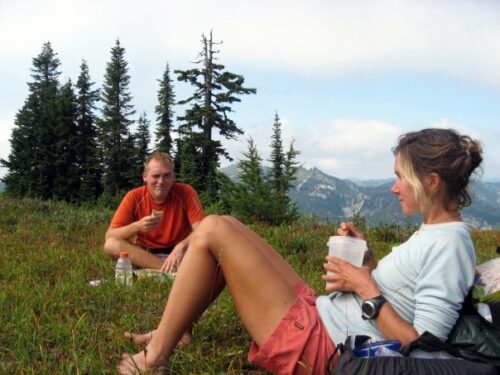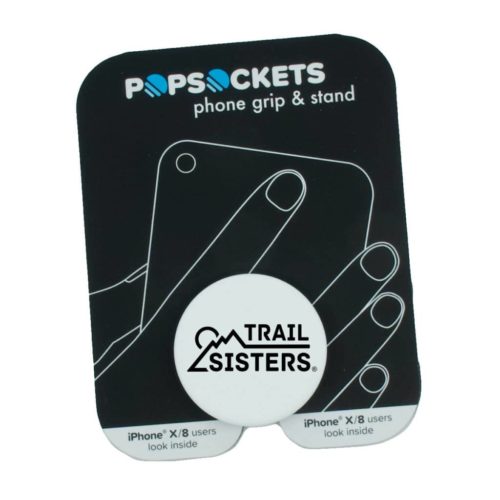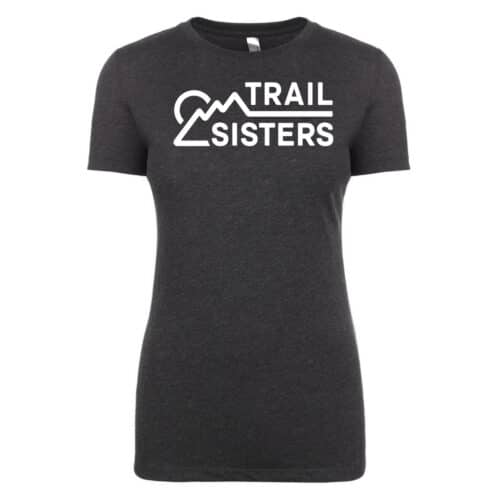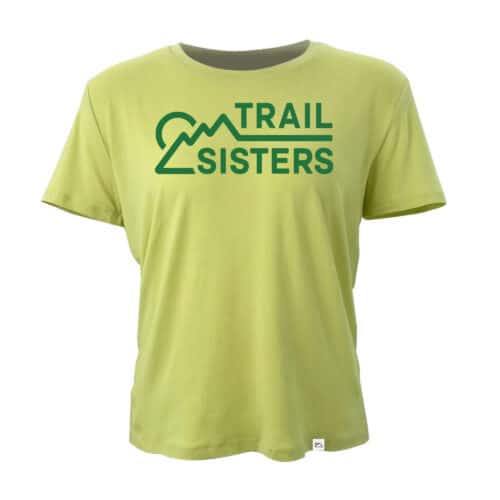Main Menu

Heather Anderson is a National Geographic Adventurer of the Year, three-time Triple Crown thru-hiker, and professional speaker whose mission is to inspire others to “Dream Big, Be Courageous.” She is also the author of two hiking memoirs Thirst: 2600 Miles to Home and Mud, Rocks, Blazes: Letting Go on the Appalachian Trail and a preparatory guide to long-distance hiking Adventure Ready. Find her on Instagram @_WordsFromTheWild_ or her website wordsfromthewild.net
Share This Article!
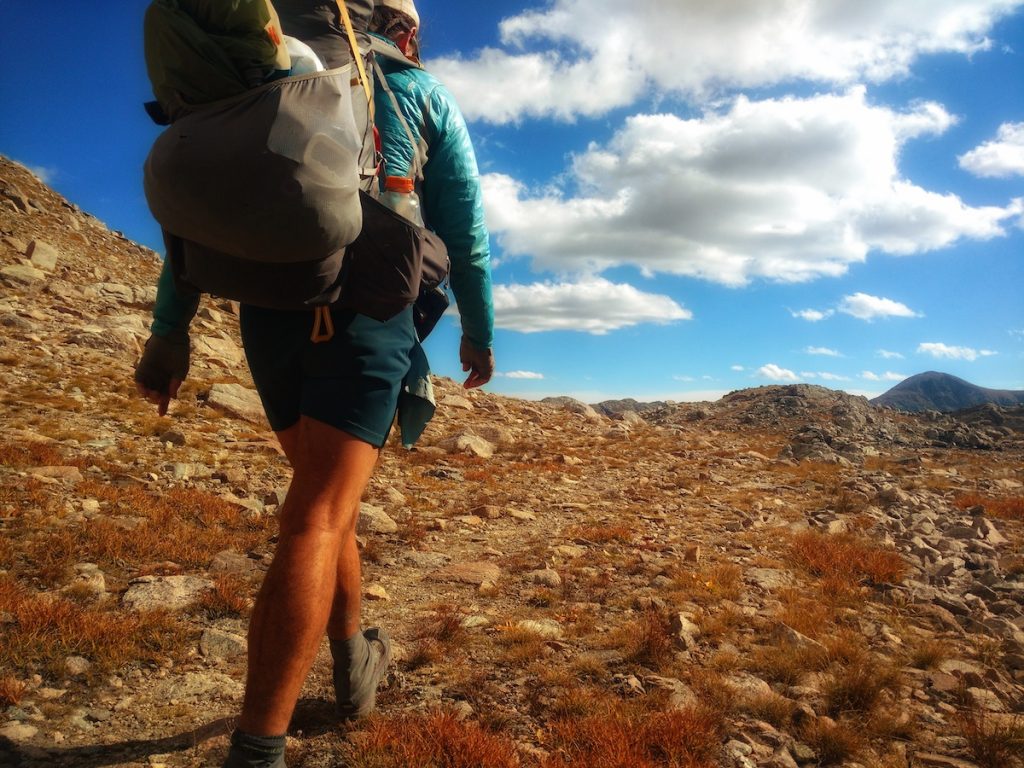

By: Heather Anderson
The first thing you’re going to do is scroll down…and keep scrolling…and scrolling and think, “Oh my gosh! This is a long article! Backpacking is too dangerous.”
Please don’t.
The thing is, if you were to sit down and list out everything you do each day to stay alive it would probably be longer than this list. Plenty of simple, everyday (and seemingly common sense) things overlap this list and that one. Things like eating and drinking enough. But you would be surprised how many people have to be rescued from the backcountry because of dehydration. When we are in an unfamiliar situation, we forget to do even the most routine things because our brain is too busy mitigating the stressors of the unknown.
So, take a deep breath and read on.
Backpacking in and of itself is a fairly safe hobby. You can of course make it more “epic” by certain choices you make. Being out on trails is generally safer than the streets of a major city. This is by far not a comprehensive guide to safety in the outdoors. It should, however, get you thinking and researching which will help you be more prepared for the next time you head out!
The greatest risk you will face in the backcountry is from…
The Weather.
Yup, you read that right. The weather. Not bears or mountain lions, or people. Although all of those things are potential risks as well.
Backpacking, as opposed to day hiking, involves sleeping out overnight (or several nights). This exposes you to a whole new level of acquaintance with the elements. It’s not just whether it will be a sunny day you have to think about, but if there will be precipitation or wind overnight, or whether it will get below freezing. Even in the desert where temperatures soar in the daytime, it can often drop dozens of degrees overnight. If you get wet hiking in the rain all day and aren’t hopping into a warm car, but rather a tent and sleeping bag, things can escalate to danger.
Weather Safety Factors:
- Look at all aspects of the forecast for day and night where you’re going, NOT the nearest town. Use the click map on noaa.gov to get a point forecast for your destination. The weather in mountainous areas can vary widely from civilization in the valleys below.
- Pack appropriately using the information from the forecast. Have adequate rain gear, a proper shelter, correctly rated sleeping bag, and sleeping pad, etc.
- Know the symptoms of things such as hypothermia and heat stress, as well as learn basic meteorological principals (such as what thunderstorm clouds look like). Pay attention to the changing environment around you throughout the day and revise your plan accordingly.
The next biggest concern backpacking is Navigation.
In your everyday life, you travel the routes you know to go most places. And when you need to go somewhere you don’t know by heart you most likely use a GPS based navigation system such as a dash GPS or Google/Apple Maps. Backpacking is no different. You need a way to navigate from point A to point B without getting lost. Many people end up injured or disappear simply because they got off route. Don’t let this happen to you!
Navigation Safety Factors:
- Leave an itinerary. Just like you’d text someone when you’re off to run an errand or you’d leave a note on the fridge that you went for a run, tell someone where you’re backpacking. Be detailed including a description of your gear and your planned campsite(s). Pictures are even better. Make sure they know when you should be back and when to notify emergency personnel that you’re overdue. Provide the right numbers to call.
- Consider carrying a Personal Locator Beacon, especially one such as a Garmin In-Reach that allows you to communicate directly with anyone, anywhere. These are essential if you’re traveling in rough terrain or solo and can literally save your life.
- Map, Compass, GPS…they are all important. A GPS is highly accurate, but if it’s your only navigation source and the batteries die, you’re in trouble. Always carry a detailed topographical map and compass with you and know how to use them! Remember, no tool is useful if you don’t understand how to use it correctly.
- Remember that if you get lost, it’s easier for you to be found if you don’t wander. This is especially important if you’re injured. Stay on or near the trail so you’re easier to locate. Search and Rescue will start with the trail corridor listed on your itinerary. The closer you are to it, the better. Take care of yourself (stay warm, dry, and hydrated) and stay calm.
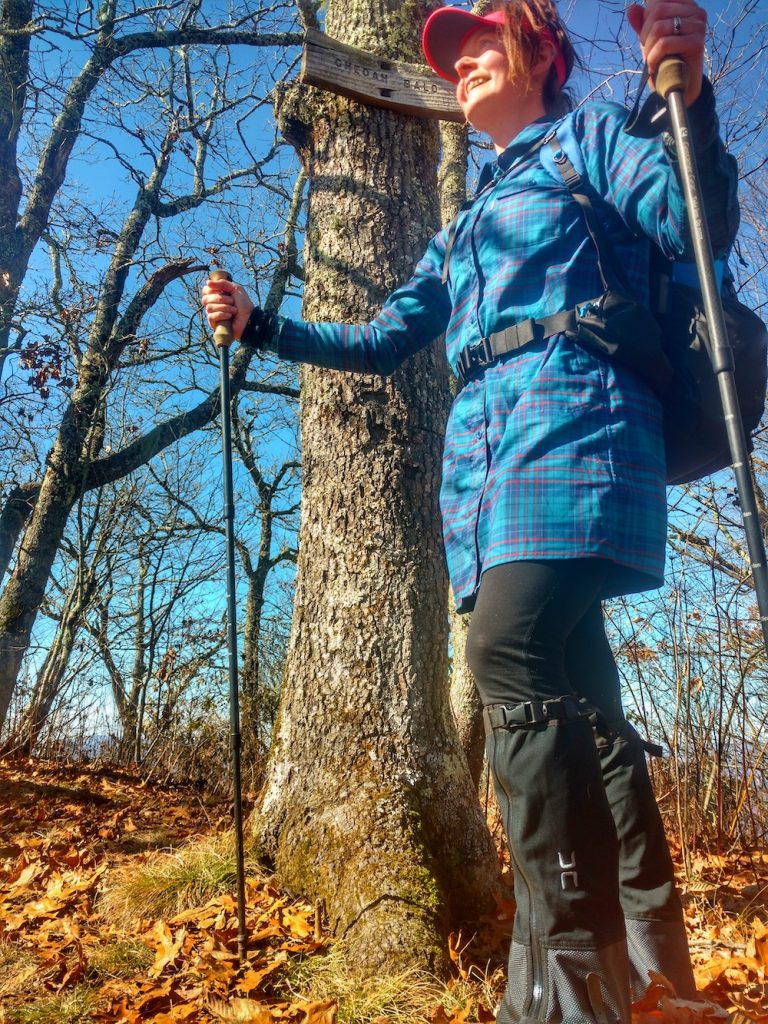
The next safety concern is Injury.
If you were to get into an accident or hurt yourself at home, you’d utilize your first aid supplies and/or go to the hospital. As I mentioned at the start of the article, things in the backcountry are exactly the same, but you have to plan ahead. Be sure to carry a first aid kit that can treat most minor injuries. This doesn’t have to be elaborate (antibiotic ointment, bandages, duct tape, moleskin, pain relief medication, etc). If you’re injured more severely than a medicine cabinet at home can treat, you need professional attention. Many things like splints or braces can be improvised from gear, but the best thing here is to have that PLB I mentioned above to get you the help that you need.
Injury Safety Factors:
- If you’re traveling in a group, leave one person with the injured party while others go for help. If you’re solo, try to stay on the trail itself to make location easier (or to be found and assisted by other hikers). Stay warm, dry, and hydrated
- If you plan to backpack frequently, take a wilderness first aid class (or, even more in-depth, a wilderness first responder).
- Travel in groups or with a partner if possible.
- Carry a PLB.
- Restock your first aid kit after every trip to ensure it’s always ready to go. Include things like Benadryl or an Epi Pen if you need them and make sure they aren’t expired.
- Carry an emergency whistle. Three blasts is the universal signal for help.
Humans are the most dangerous animal in both the back and front country. Luckily, most of the people you will meet while hiking and backpacking are fellow hikers who are out enjoying nature just like you. If they aren’t, remember a few important things:
Human Safety Factors:
- Trust your gut. I cannot emphasize this enough. We’re an animal…a very weak and maladapted animal that came to dominance of the natural world through tools (eg. weapons). Our instincts saved our ancestors from saber-toothed tigers and marauding wooly mammoths. They can save you from humans (and other animals) too. If something inside you is screaming, “Sketchy!” listen to it and get away from the person or situation. This applies to off-trail life too.
- Choose your campsites well. This is a safety protocol for many reasons. Proper campsites will protect you from the elements, keep you away from areas frequented by wildlife (and hunters following the wildlife) and from other people. Don’t camp right near a road, or a place that people obviously party, ride ATV’s or any other non-human powered activity. In fact, LNT states you should camp 200 feet from water or a trail. Step that out sometime and then see if your tent is visible from the trail. Unless it’s a bright color or in very open terrain I bet it isn’t. LNT can save your life! (That’s a bit melodramatic, but you should still be practicing Leave No Trace ethics when you camp. Read more here.)
But what about the Bears?
Ok, wildlife is a factor, but it’s way down here on the list for a reason. Wildlife wants absolutely nothing to do with you (with a few exceptions). The two animals more people seem to be most afraid of are bears and mountain lions. Keep in mind, these two animals do not live everywhere, nor do they lie in wait for unsuspecting backpackers. However, there are a wide array of venomous, carnivorous, and apex predators in all our wildlands. There are also adorable things like squirrels and chipmunks that carry the Bubonic Plague…
Wild Animal Safety Factors:
- Learn about wildlife in your proposed hiking area. Knowledge is power and you’ll likely find yourself to be more excited than scared about what’s out there. Read up on ways to act if you do run across a potentially dangerous animal (news flash: they all are). Generally speaking, animals have a safety bubble just like people. Keep clear and ensure they have an escape path and you’ll probably be fine. Here are some resources that you may find helpful if you encounter a bear or a mountain lion.
- Carry Bear Spray. This is most recommended in Grizzly terrain, but it is of course effective on all bears/mammals if you find yourself in a last resort situation.
- Do not camp near water, game trails, or other areas that have obvious signs of heavy animal use (such as scat). This reduces your chances of having a nocturnal visitor in your campsite!
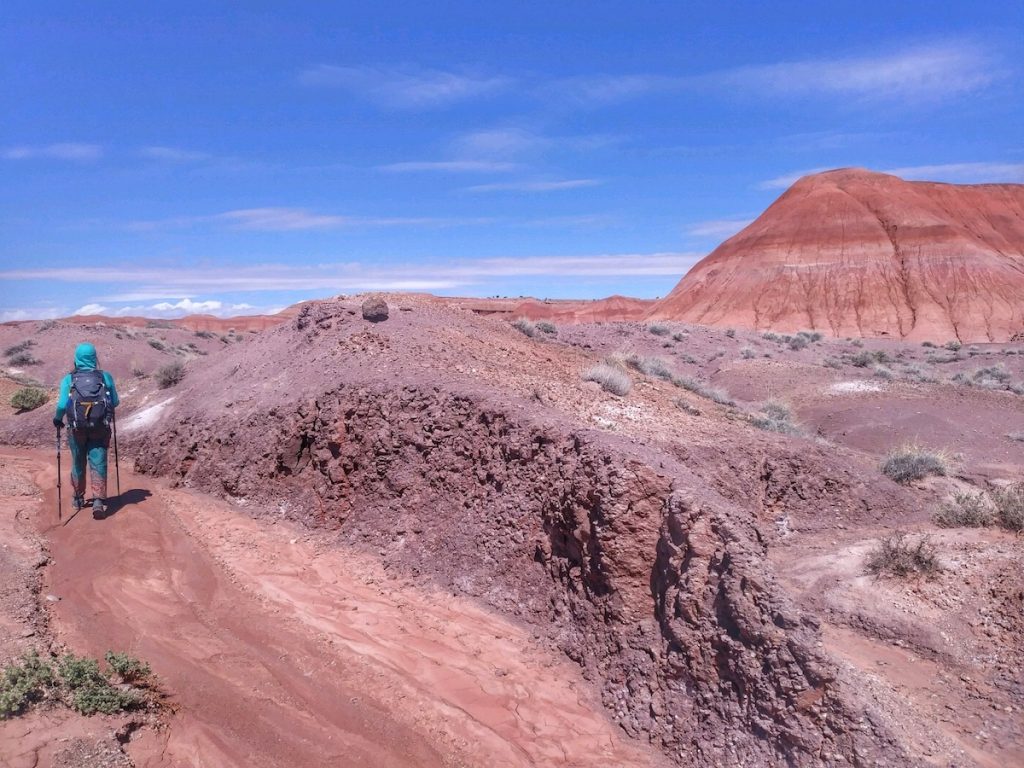
A few more miscellaneous tips:
- Make good choices before you even leave home. Research the route and think realistically about your abilities and the difficulty and technicality of the trail. It’s much better to finish your trip early than to end up embroiled in an over-your-head epic adventure that results in a Search and Rescue Mission. Build your backpacking skills just like you do your running mileage…slowly and safely.
- Hand in hand with this is conditioning. Be sure that the amount of time you’ve planned for a certain trip is in your wheelhouse. If it’s cutting it close, have strict turn-around times and/or options to cut it short. The better matched your conditioning level is to your trip, the safer and more enjoyable it will be.
- Always hike with a partner if you can. Having another person with you increases the safety for both of you in nearly every facet listed above. If you do have to travel alone, recognize the increased risks you’ll be taking and plan for them. Mitigate them as best you can using the tips above (and anything else applicable).
- Stay hydrated and fed, treat your water, protect yourself from the sun, ticks, and poisonous plants.
- Pack and know how to use the 10 Essentials. The Mountaineers resource does a great job delineating and explaining them. In short, they are:
- Navigation (map, compass, GPS, etc)
- Sun protection (sunscreen, hat, long sleeves, etc)
- Extra layers (a jacket or an emergency blanket can go a long way)
- Lighting (headlamp and extra batteries)
- First Aid Kit
- A way to start a fire (matches, lighter, firestarters, etc)
- Knife
- Extra food
- Shelter (obvious if you’re backpacking, but even on a day hike an ultralight emergency bivy is a good idea)
- Extra Water
About the Author

Heather Anderson is a National Geographic Adventurer of the Year, three-time Triple Crown thru-hiker, and professional speaker whose mission is to inspire others to “Dream Big, Be Courageous.” She is also the author of two hiking memoirs Thirst: 2600 Miles to Home and Mud, Rocks, Blazes: Letting Go on the Appalachian Trail and a preparatory guide to long-distance hiking Adventure Ready. Find her on Instagram @_WordsFromTheWild_ or her website wordsfromthewild.net
Share This Article!


